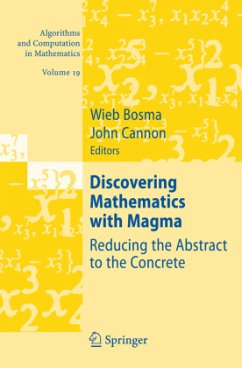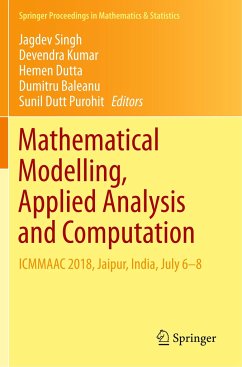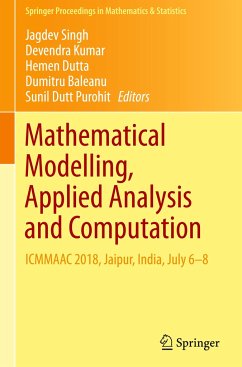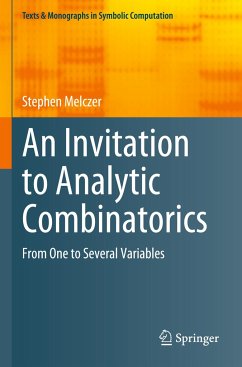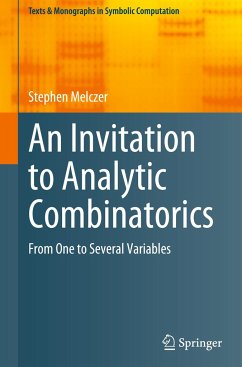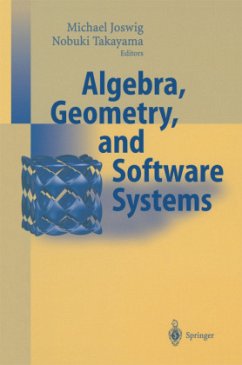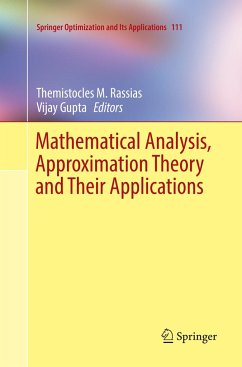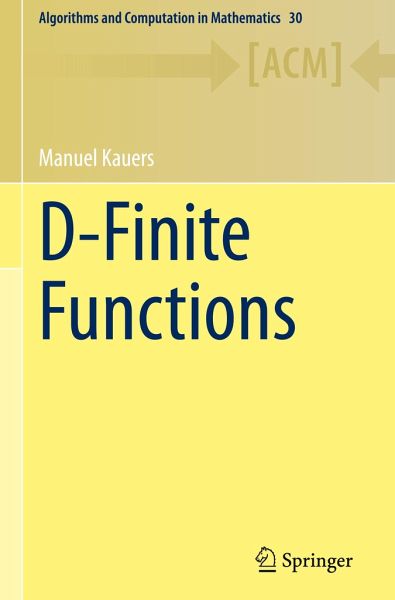
D-Finite Functions
Versandkostenfrei!
Versandfertig in 6-10 Tagen
76,99 €
inkl. MwSt.
Weitere Ausgaben:

PAYBACK Punkte
38 °P sammeln!
Defined as solutions of linear differential or difference equations with polynomial coefficients, D-finite functions play an important role in various areas of mathematics. This book is a comprehensive introduction to the theory of these functions with a special emphasis on computer algebra algorithms for computing with them: algorithms for detecting relations from given data, for evaluating D-finite functions, for executing closure properties, for obtaining various kinds of "explicit" expressions, for factoring operators, and for definite and indefinite symbolic summation and integration are ...
Defined as solutions of linear differential or difference equations with polynomial coefficients, D-finite functions play an important role in various areas of mathematics. This book is a comprehensive introduction to the theory of these functions with a special emphasis on computer algebra algorithms for computing with them: algorithms for detecting relations from given data, for evaluating D-finite functions, for executing closure properties, for obtaining various kinds of "explicit" expressions, for factoring operators, and for definite and indefinite symbolic summation and integration are explained in detail.
The book comes "with batteries included" in the sense that it requires no background in computer algebra as the relevant facts from this area are summarized in the beginning. This makes the book accessible to a wide range of readers, from mathematics students who plan to work themselves on D-finite functions to researchers who want to apply the theory to theirown work. Hundreds of exercises invite the reader to apply the techniques in the book and explore further aspects of the theory on their own. Solutions to all exercises are given in the appendix.
When algorithms for D-finite functions came up in the early 1990s, computer proofs were met with a certain skepticism. Fortunately, these times are over and computer algebra has become a standard tool for many mathematicians. Yet, this powerful machinery is still not as widely known as it deserves. This book helps to spread the word that certain tasks can be safely delegated to a computer algebra system, and also what the limitations of these techniques are.
The book comes "with batteries included" in the sense that it requires no background in computer algebra as the relevant facts from this area are summarized in the beginning. This makes the book accessible to a wide range of readers, from mathematics students who plan to work themselves on D-finite functions to researchers who want to apply the theory to theirown work. Hundreds of exercises invite the reader to apply the techniques in the book and explore further aspects of the theory on their own. Solutions to all exercises are given in the appendix.
When algorithms for D-finite functions came up in the early 1990s, computer proofs were met with a certain skepticism. Fortunately, these times are over and computer algebra has become a standard tool for many mathematicians. Yet, this powerful machinery is still not as widely known as it deserves. This book helps to spread the word that certain tasks can be safely delegated to a computer algebra system, and also what the limitations of these techniques are.




